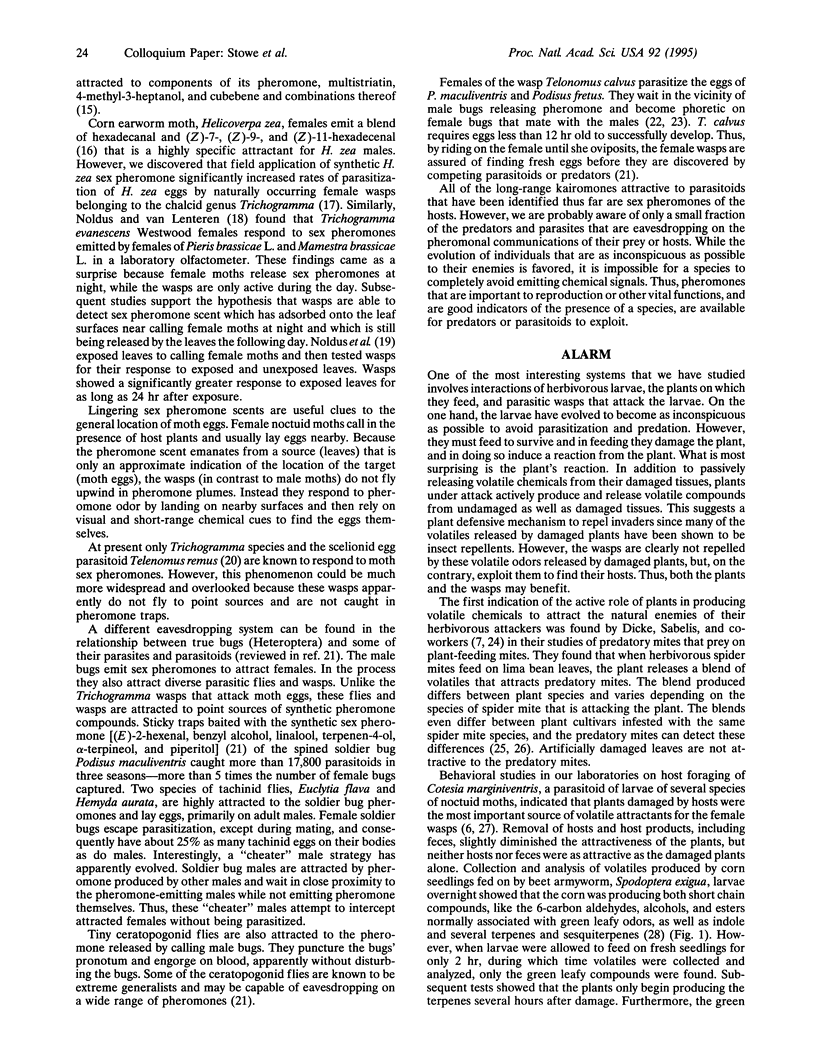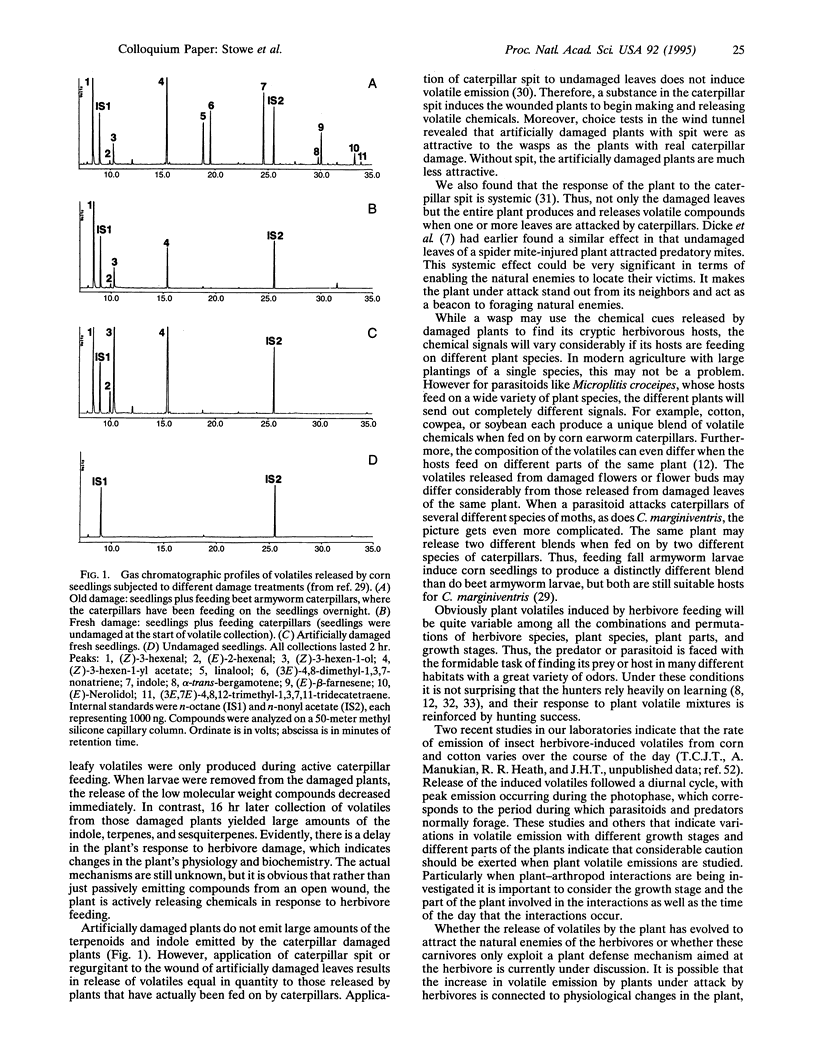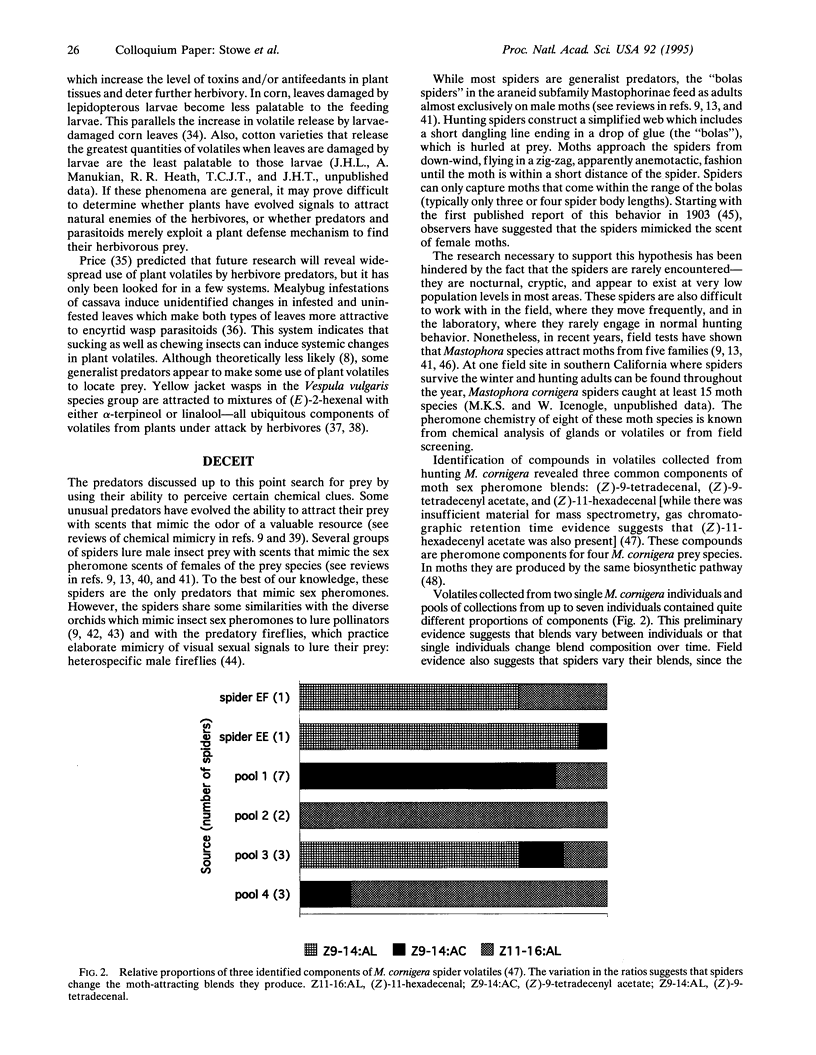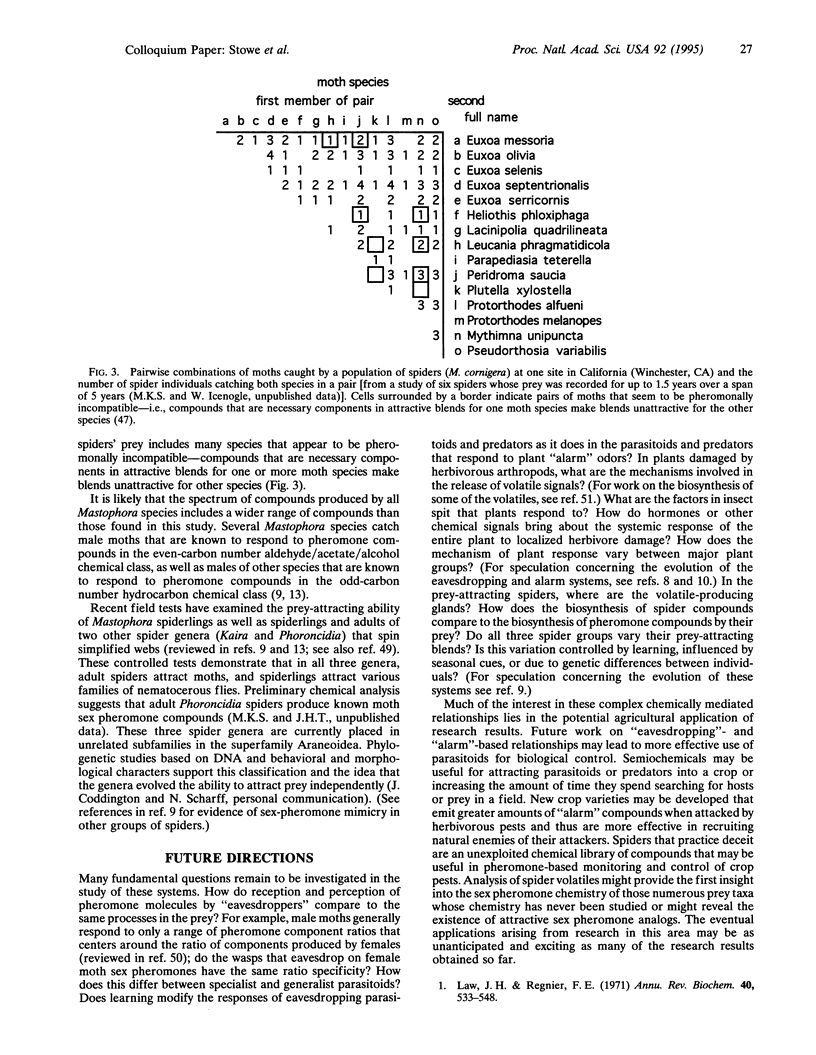Abstract
Arthropods that prey on or parasitize other arthropods frequently employ those chemical cues that reliably indicate the presence of their prey or hosts. Eavesdropping on the sex pheromone signals emitted to attract mates allows many predators and parasitoids to find and attack adult insects. The sex pheromones are also useful signals for egg parasitoids since eggs are frequently deposited on nearby plants soon after mating. When the larval stages of insects or other arthropods are the targets, a different foraging strategy is employed. The larvae are often chemically inconspicuous, but when they feed on plants the injured plants respond by producing and releasing defensive chemicals. These plant chemicals may also serve as "alarm signals" that are exploited by predators and parasitoids to locate their victims. There is considerable evidence that the volatile "alarm signals" are induced by interactions of substances from the herbivore with the damaged plant tissue. A very different strategy is employed by several groups of spiders that remain stationary and send out chemical signals that attract prey. Some of these spiders prey exclusively on male moths. They attract the males by emitting chemicals identical to the sex pheromones emitted by female moths. These few examples indicate the diversity of foraging strategies of arthropod predators and parasitoids. It is likely that many other interesting chemically mediated interactions between arthropod hunters and their victims remain to be discovered. Increased understanding of these systems will enable us to capitalize on natural interactions to develop more ecologically sound, environmentally safe methods for biological control of insect pests of agriculture.
Full text
PDF





Selected References
These references are in PubMed. This may not be the complete list of references from this article.
- Bjostad L. B., Roelofs W. L. Sex Pheromone Biosynthesis in Trichoplusia ni: Key Steps Involve Delta-11 Desaturation and Chain-Shortening. Science. 1983 Jun 24;220(4604):1387–1389. doi: 10.1126/science.220.4604.1387. [DOI] [PubMed] [Google Scholar]
- Croft KPC., Juttner F., Slusarenko A. J. Volatile Products of the Lipoxygenase Pathway Evolved from Phaseolus vulgaris (L.) Leaves Inoculated with Pseudomonas syringae pv phaseolicola. Plant Physiol. 1993 Jan;101(1):13–24. doi: 10.1104/pp.101.1.13. [DOI] [PMC free article] [PubMed] [Google Scholar]
- Law J. H., Regnier F. E. Pheromones. Annu Rev Biochem. 1971;40:533–548. doi: 10.1146/annurev.bi.40.070171.002533. [DOI] [PubMed] [Google Scholar]
- Loughrin J. H., Manukian A., Heath R. R., Turlings T. C., Tumlinson J. H. Diurnal cycle of emission of induced volatile terpenoids by herbivore-injured cotton plant. Proc Natl Acad Sci U S A. 1994 Dec 6;91(25):11836–11840. doi: 10.1073/pnas.91.25.11836. [DOI] [PMC free article] [PubMed] [Google Scholar]
- Stowe M. K., Tumlinson J. H., Heath R. R. Chemical mimicry: bolas spiders emit components of moth prey species sex pheromones. Science. 1987 May 22;236(4804):964–967. doi: 10.1126/science.236.4804.964. [DOI] [PubMed] [Google Scholar]
- Turlings T. C., Tumlinson J. H., Lewis W. J. Exploitation of herbivore-induced plant odors by host-seeking parasitic wasps. Science. 1990 Nov 30;250(4985):1251–1253. doi: 10.1126/science.250.4985.1251. [DOI] [PubMed] [Google Scholar]
- Turlings T. C., Tumlinson J. H. Systemic release of chemical signals by herbivore-injured corn. Proc Natl Acad Sci U S A. 1992 Sep 1;89(17):8399–8402. doi: 10.1073/pnas.89.17.8399. [DOI] [PMC free article] [PubMed] [Google Scholar]


